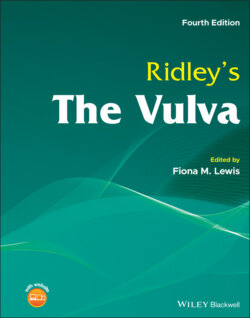Читать книгу Ridley's The Vulva - Группа авторов - Страница 125
Sexual response
ОглавлениеThe sexual response is a sequence of events – desire, arousal, orgasm, and resolution – brought about by physiological changes triggered locally and centrally. The pathways are complex, but it is increasingly recognised that the clitoris is central to the process [31], and is regarded as the homologue of the penis in females [32]. Imaging techniques, particularly MRI and functional MRI, have led to a better understanding of clitoral anatomy and function [33]. There is conflicting evidence as to whether clitoral size plays a part in sexual function. One study found a smaller clitoral glans on MRI with an increased distance from the vagina in patients who were anorgasmic [34]. However, other studies have not shown any correlation between clitoral size and sexual function [35].
The clitorourethrovaginal complex is a term used to describe the interplay between the three structures and their role in the sexual response [36]. There is a long‐standing debate about the existence of an erogenous zone in the anterior vagina (G‐spot), but there is no evidence for any distinct structure.
The sexual response is a sequence of events involving initial stimulation of the sensory receptors and nerves of the clitoris, mainly via the sensory function of the epithelium, which stimulates the release of neurotransmitters [37]. Afferent fibres then transmit to the spinal cord roots at S2‐4, leading to activation of the parasympathetic system leading to vasodilatation in the erectile tissue. Genital arousal in females involves an increase in blood flow, clitoral engorgement and erection, and swelling of the labia minora, which is sufficient to induce some traction on the clitoris. The suspensory ligament in the female can restrict movement of the clitoris so that it can move up with arousal but it does not straighten [38]. If the threshold for orgasm is reached, there is then a central component which activates skeletal and autonomic smooth muscle contraction [39].
There is conflicting evidence about sexual desire and arousal in relation to the menstrual cycle, but it is generally accepted that sexual desire does peak mid‐cycle and in the pre‐menstrual phase. Hypoactive sexual desire disorder can be related to numerous physical, endocrine, and psychosocial factors [40], and it is helpful to screen patients and then refer appropriately.
